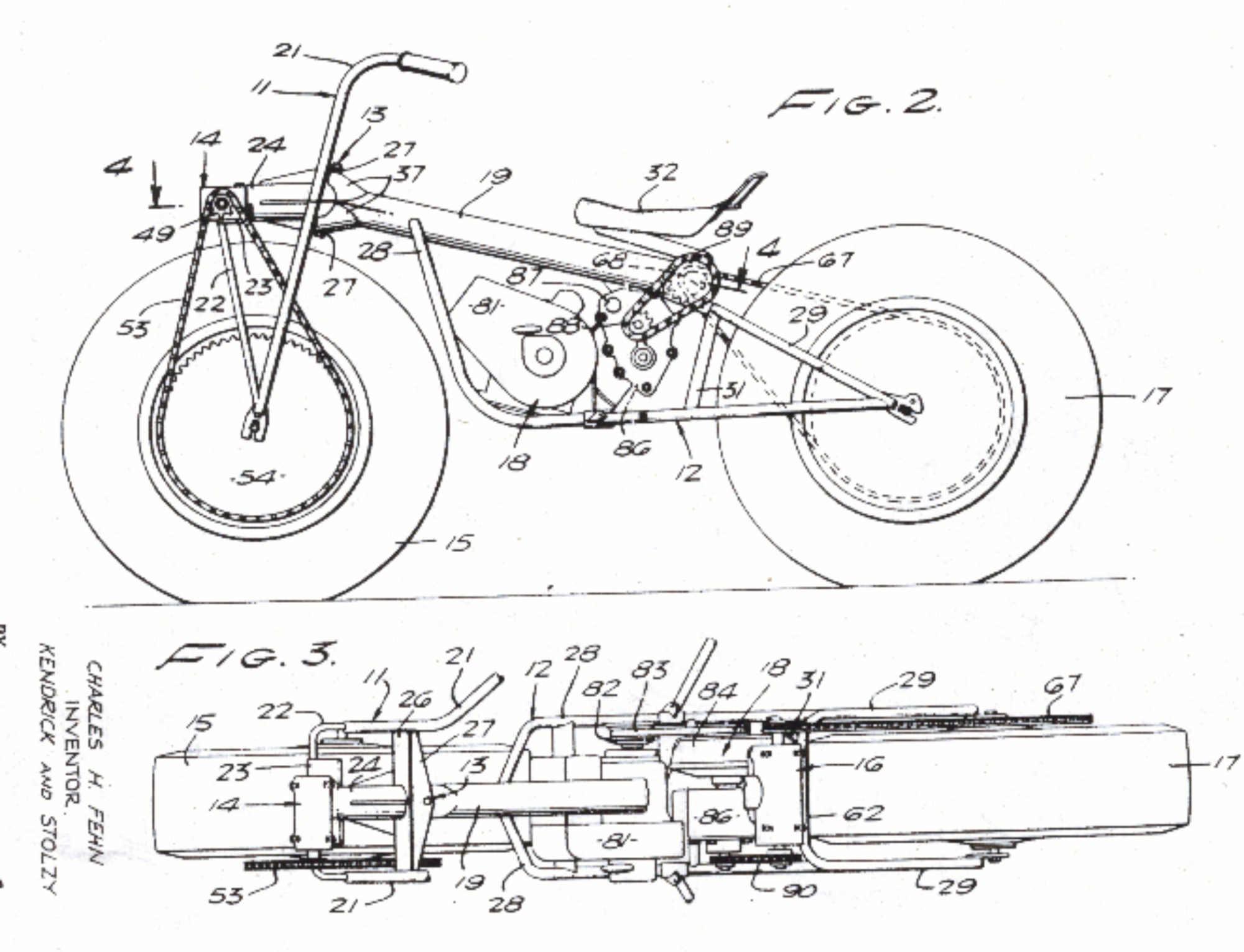Rokon was founded by Orla Larsen in Vermont in 1963 to market the Nethercutt Trail-Breaker, a two-wheeled motorcycle invented by Charlie Fehn around 1958 and built in Sylmar, California. In 1964 Rokon Inc. the production rights to the Trail-Breaker and began its own production in Vermont before moving to New Hampshire, where the company is still located.
Rokon motorcycles use a combination of belt, chain and axle drives coupled with gearboxes to drive both the front and rear wheels. Older machines were powered by a West Bend (US Motor / Chrysler Marine) 820 two-stroke engine (134cc), while newer machines have a Honda or Kohler engine of about 6 hp. Each wheel is a 'jerry can' for about ten liters of petrol or water. Because with a Rokon you never know where you will end up. Oh yes: the wheels act 'empty' as floating bodies. They allow the Rokon to float on its side.
Rokons are slow off-road motorcycles designed for use in the most rugged terrain
Some are 50 km / h fast, but the average speed is one kilometer or 30 per hour. And when climbing a really serious slope, the speed can just drop back to 1 km / h.
With the stepless transmission of a snowmobile
In 1974, Rokon produced the RT340 TCR Automatic, using a Salsbury CVT snowmobile transmission, rear-wheel drive only and dual disc brakes. The drawstring to start the engine was also something more familiar to snowmobile riders than motorcyclists. The transmission runs freely up to approximately 2800 RPM; and is set so that the motor always runs close to peak power, at 6.000 to 6.700 RPM. The lowest gear ratio is 3,76: 1 and the highest 0,87: 1. The use of a CVT makes it possible to use an 2 stroke engine with more power and a narrower power band. The transmission freewheels if it is not driven, so braking on the engine does not do such a Rokon. The transmission is thereby ventilated to the outside for cooling and that 'open' construction makes it sensitive to external contamination. Water causes slip but disappears quickly; however, grit can cause the transmission to jam.
No feedback due to the speed
Driving on loose surfaces is not that complicated, but causes some confusion in the beginning because a slipping rear wheel has no influence on the engine speed. Such a Rokon does make a bump noise (90,3 dB (A)) because the block is by definition high in revs, except when idling. Despite the low weight on the front wheel (about 43%), such a Rokon does not feel like pulling wheelies, and that is a problem for Enduro driving when you want to jump over something.
It has been raced with
Prototypes were raced by factory riders from 1971 to 1973 under the Tom Clark banner; "TCR" stands for "Tom Clark Replica". In the 48th Annual Six Days, all four riders won bronze medals. Regular test riders were enthusiastic about the climbing ability and hard surface riding, but criticized handling on loose surfaces and sloping hills.
Here in the Netherlands, Rokon's rare appearances
We recently saw one at Dutch Lion Motorcycles. Rokons are - just like Landrovers once were - machine tools rather than vehicles. But they are very nice.







